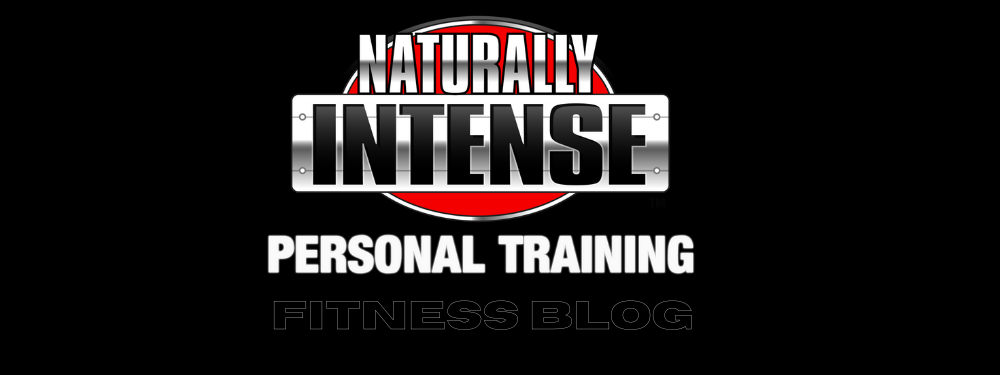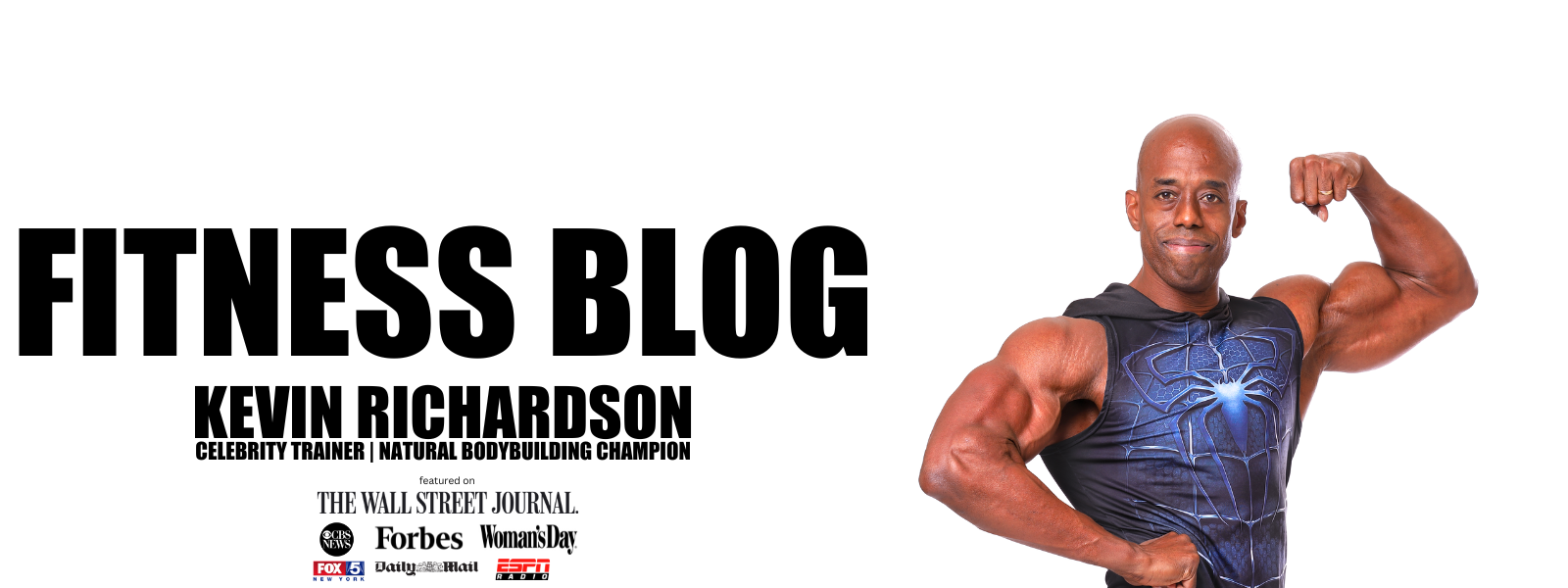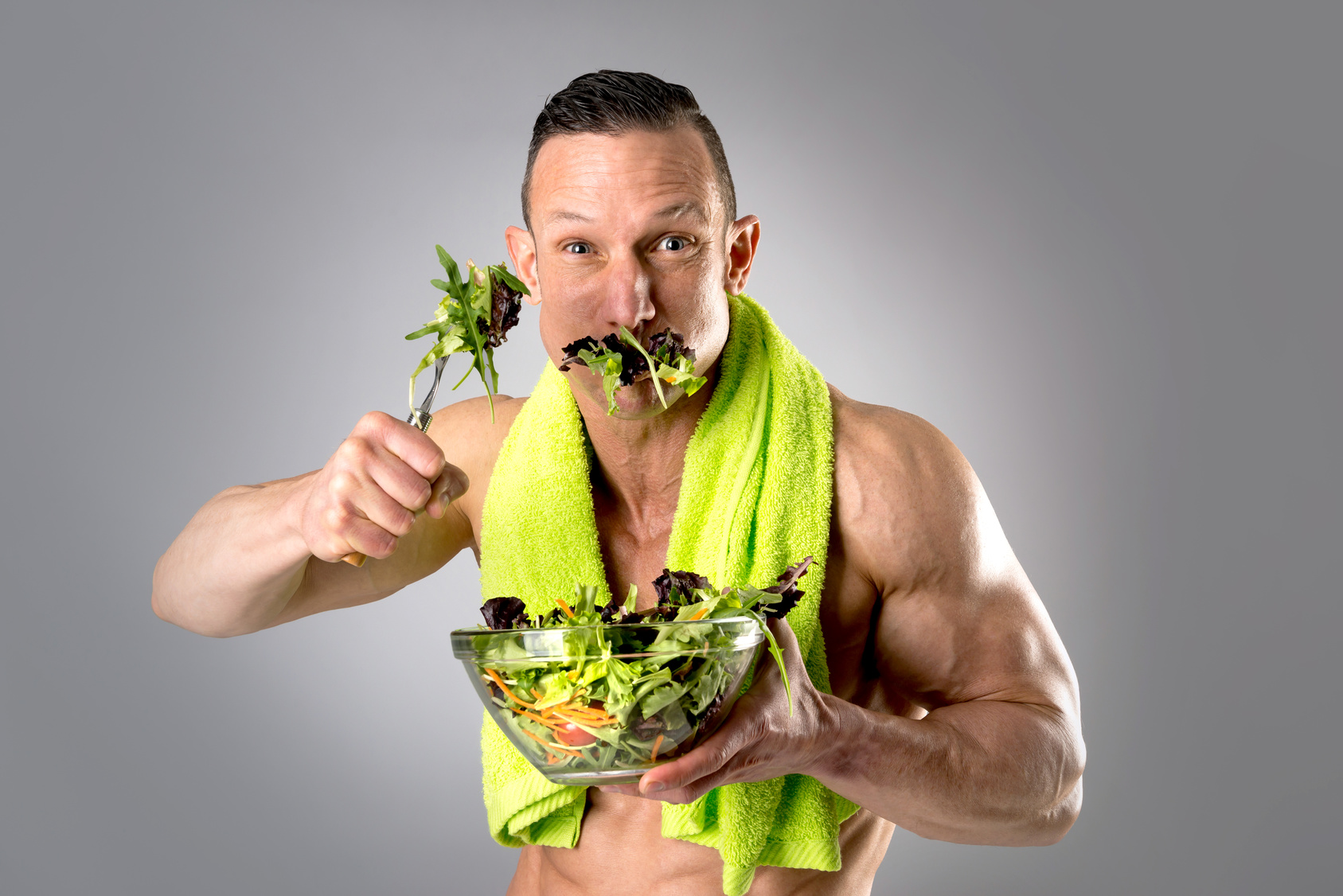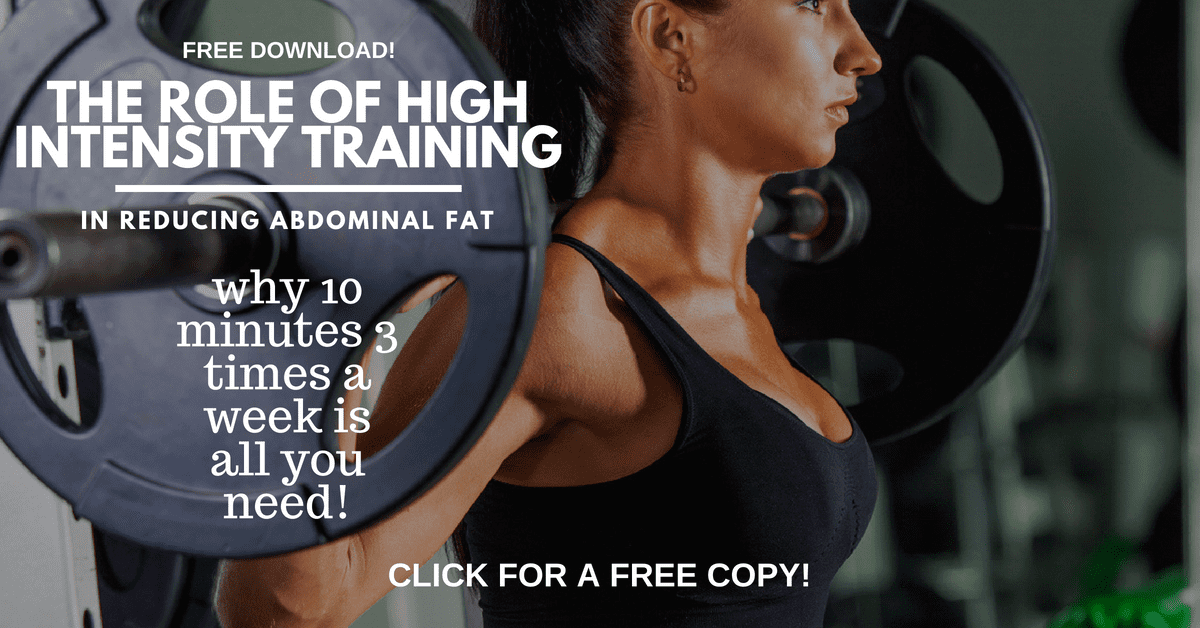How To Eat More And Lose Weight- An Evolutionary Argument Against Low Calorie Diets
Human beings are genetically predisposed to higher energy intakes, as evidenced by the growing worldwide increases in obesity that correspond with the increased availability of calories in the diet thanks to processed and refined Westernized foods. The natural counter to such an occurrence would be to have people eat less, yet, low calorie diets have been proven over the past several decades to be abysmal long-term failures. We are programmed, hardwired if you will, to eat more in an environment of superabundance, which is now the case in more and more developed and developing countries,[4] yet clinicians persist in the promotion of lowering calorie intakes long term as the primary mode of weight loss. But what if there was a way to eat more and still lose weight? A solution that not only provided a way to lose weight, but to also keep it off, as the main problem dieters face is the discomfort brought on by low calorie dieting. Discomfort that in time usually becomes more unpleasant than the repercussions of regaining all the weight loss, and so, in a cycle that ends in abject frustration, most people will eventually regain all weight lost when they start back eating at what they perceive as normal levels. Low carb diets, ketogenic diets, low fat diets, intermittent fasting, mindful eating and the slew of diets that are too many to list can all bring about temporary weight loss. Yet they all fail to address the critical point that it is unrealistic to expect a human being to eat less long term.[2,3,4] Short term, absolutely, long term, absolutely not. In this article we are going to explore how to eat more and lose weight, or more accurately, how to eat more, lose weight and keep the weight off long term. It isn’t a simple proposition and for most it will require a rethinking of conventional approaches to exercise and dietary intake, but it has been proven to be convenient, doable and sustainable for all, regardless of age, fitness level or gender. The solution is to dedicate all exercise efforts towards increasing muscle mass through brief, high intensity workouts in conjunction with a natural food-based diet. Read on and we will discuss not only why it works, but why conventional dieting and exercise does not.
How To Eat More And Lose Weight: Understanding Why Eating Less Isn’t A Natural Human Trait
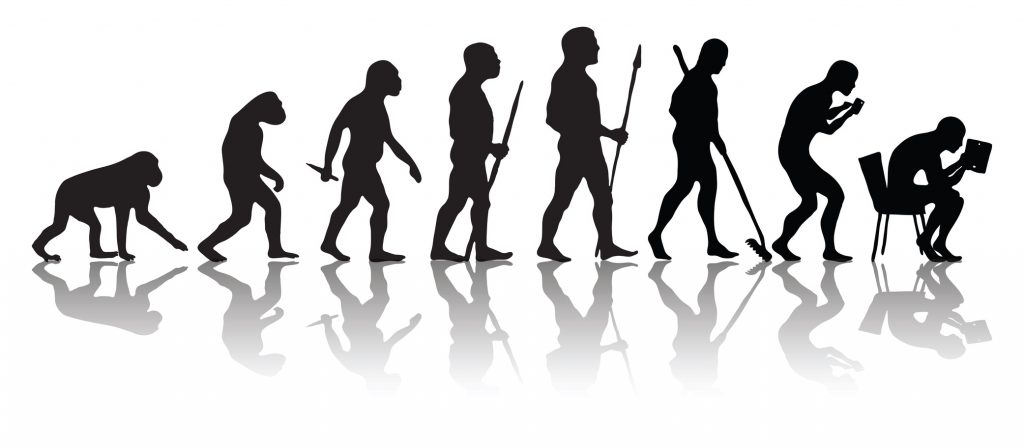
To solve the complexities of weight loss, we need to stop focusing on what we should be doing and focus first on understanding what we should not be doing as well as who we are and why we are the way we are. – Author
The concept of evolutionary mismatch, namely a departure from the nutrition and activity patterns of our ancestors has been recognized as a major contributing factor to the endemic rates of obesity and chronic diseases that we face today in developed countries.[5] At birth every single one of us inherited thousands of genes that interact directly with our environment. Genes that were naturally selected over the thousands, possibly even millions of generations because they improved our ancestors’ ability to survive and reproduce. As such, we are all adapted to eating a certain way, and have certain baseline levels of activity requirements that we need to maintain optimal health. Problems manifest themselves when we eat foods and adopt sedentary lifestyles that are far removed from what we have been all genetically adapted to over the past 2.2 million years.[6,7] This discordance usually results in what are commonly referred to as “diseases of civilization.” Namely obesity and the array of metabolic and diet related diseases that accompany it. We are all descendants of hominids that thrived and evolved following a combination of hunting and gathering naturally occurring foods. Who then mostly moved on to become agriculturalists with staple grains as the base of our diet, and we tend to have the most robust health when this diet is supplemented with wild meat and wild plants.[6] Our history with natural foods spans millions of years, while our time consuming modern processed foods spans only decades at best. The maladaptive responses our bodies have to these novel foods sources and modern living conditions are part of what makes us gain excess weight.[6] We compound this problem when we attempt to reverse weight gain by severely curtailing our energy intake by eating less. As our bodies are not adapted to prefer lower energy intakes, especially in the face of a superabundant food supply.
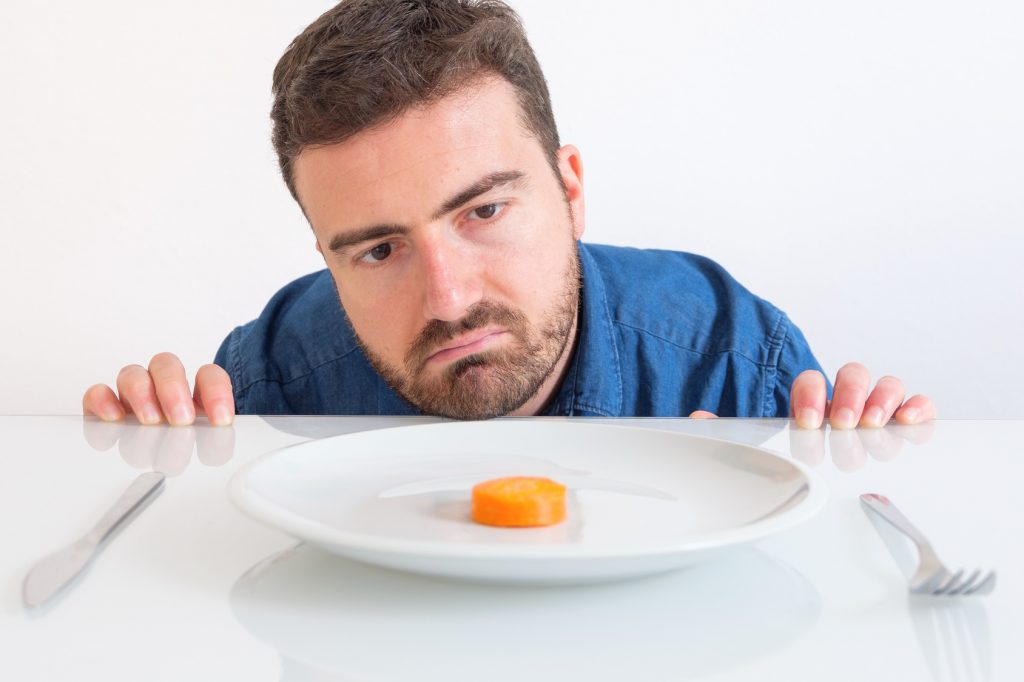
The idea of blaming peoples’ lack of mindfulness or lack of self-control on our current obesity crisis reveals itself to be illogical given the reality of our shared biology. People who live in foraging societies, or those rely on subsistence farming in countries where Western foods and eating habits have not yet been adopted, have very low incidences of obesity. However, when people from these obesity-free environments emigrate to Westernized countries, they gain weight and suffer even greater incidences of obesity and metabolic disease when compared to native Western populations. Because they do what their bodies are programmed to do, which is consume as much energy as possible in an energy rich environment. [8] Thus, we can’t put the blame on personal failing, as the reaction to gravitate towards energy dense foods in an energy rich environment is simply part of being human. The problem is that our ancestors (and those from non-Westernized countries) didn’t have access to abundant sources of energy as much as we do today. Nor did they have foods that could allow them to consume more calories per unit than is possible with natural foods.[9] Humans are not adapted to low calorie intakes for prolonged periods of time in the presence of a super abundant food supply and the high failure rate of low-calorie diets has more to do with our shared genetic past than lack of willpower. Staying on a low-calorie diet in today’s world means not only going against strong social pressures to eat what and the way that the greater part of the population eats, but it also means single handedly going against millions of years of ingrained hominid behavior to eat more. Thus, it should be no surprise that as many as 80% of men and women who attempt to lose weight through conventional dieting regain all weight lost within a year, even if they exercise regularly.[2,3,4]
How To Lose Weight By Eating More: Understanding Why Eating Less Can Make Us Fatter
The prime directive of our bodies is to ensure our survival by having adequate energy stores, which exists mainly in the form of body fat. Not to have a flat abdominal region, not to get rid of love handles, not to have a six pack and most certainly not to lose weight long term.
Since we are the product of our ancestral environments, our bodies CANNOT distinguish between the threat of starvation and your desire to shed a few pounds by eating less and cutting your calories. Your body has no way of knowing that the energy deprivation is a conscious choice and so over time the lowered caloric intake triggers a cascade of neuroendocrine and physical changes that makes weight regain all but inevitable. [10,11] The idea is that if you eat less and consume less calories than your body needs to maintain its current weight, weight loss will occur. So, some variation of eating less, be it a fasting, low carbohydrate or low-fat diet, preferably with exercise added in to increase energy expenditure, is what most people use to lose weight, and it works temporarily. The weight loss you experience from eating less usually comes from a decrease in water, fat mass and fat free mass. Since both fat mass and fat free mass are metabolically active, the more weight you lose the lower your Resting Metabolic Rate (RMR) will be. RMR counts for a large percentage of energy expended in your body every day and over time “adaptive thermogenesis” occurs. Which is what happens when your body tries to adapt to the decreased energy intake by conserving as much energy as possible to prevent what it perceives as possible starvation. It will also, as we mentioned before, trigger strong neuroendocrine signals that you experience as the overwhelming sense of hunger, fatigue and discomfort. Discomfort that eventually builds to a point where most will overeat to compensate. [11,12] Making you regain the weight lost. None of this is new, as most people who have tried to lose weight by eating less have had this experience. The problem is that such dietary practices can also make things worse long term.
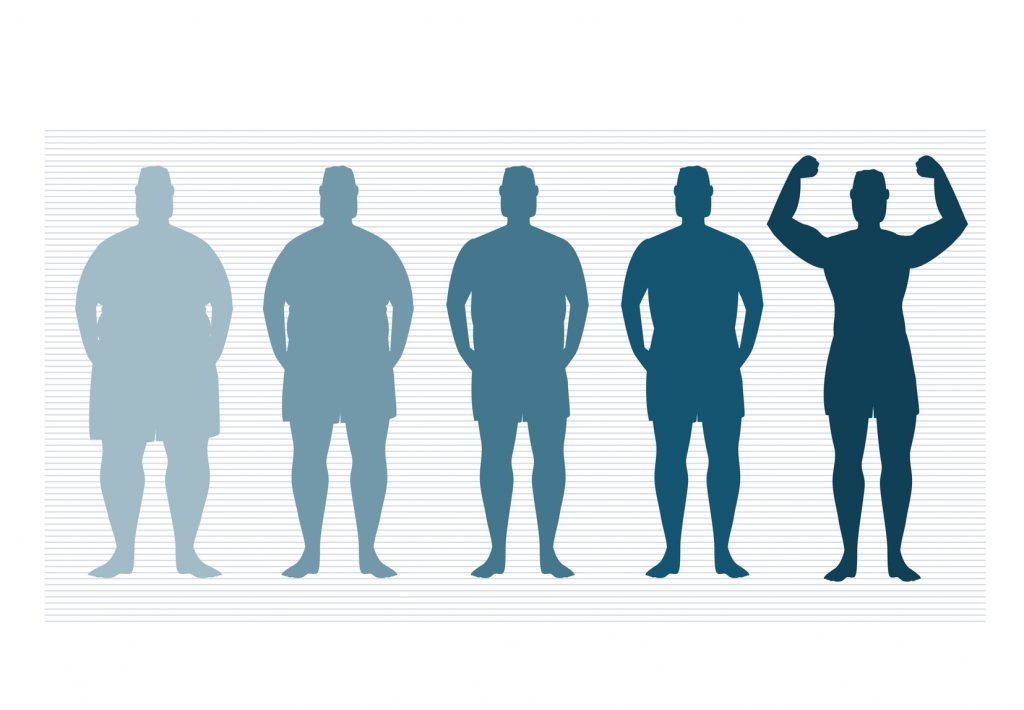
Let’s look at what happened to the contestants on the television reality show, “The Biggest Loser.” Seven overweight males and three females were trained for an average of two hours a day, six days a week for thirty weeks doing a combination of aerobics and circuit training. Their dietary intake was at least 70% of RMR (baseline energy requirements) and after thirty weeks, participants lost between 52lbs and 127 lbs. Sounds good so far, but this weight loss came at a hefty price. Resting metabolic rates plummeted from baseline figures by about 350 calories per day after the first 6 weeks and went down to a low of 790 calories per day.[66] That’s a reduction of almost 800 calories a day. Meaning their bodies were at a point where they would have needed to eat at least two whole meals less every day for the rest of their lives in order to maintain their weight loss. Every cell in our body will tell you that this can’t be sustained long term and as expected, all but one contestant regained most of the weight lost. You might think this was the end of the bad news, but it gets worse. The group averaged a baseline RMR of 2,607 calories per day while at rest before the competition to maintain their weight and it dropped to about 2,000 calories per day at the end of their time on the television show. It gets even worse. Six years later, their resting metabolic rate had slowed down even further to 1,900 kcals per day, even though their body composition and weight returned to exactly the same levels they were at the start.[66] Researcher were at a loss to explain why this happened, and some studies have found that it can take as long as two years for your metabolism to go back to what it was before you lost weight.[69] However, from an evolutionary perspective it is rather simple. Our bodies are designed to prevent weight loss, as lowered body fat means a reduced likelihood of survival in the face of food shortages that were common during the climatically variable times of hominid development.
Eating More To Lose Weight: Hunter Gatherers Eat More Than We Do But Are Not Fat
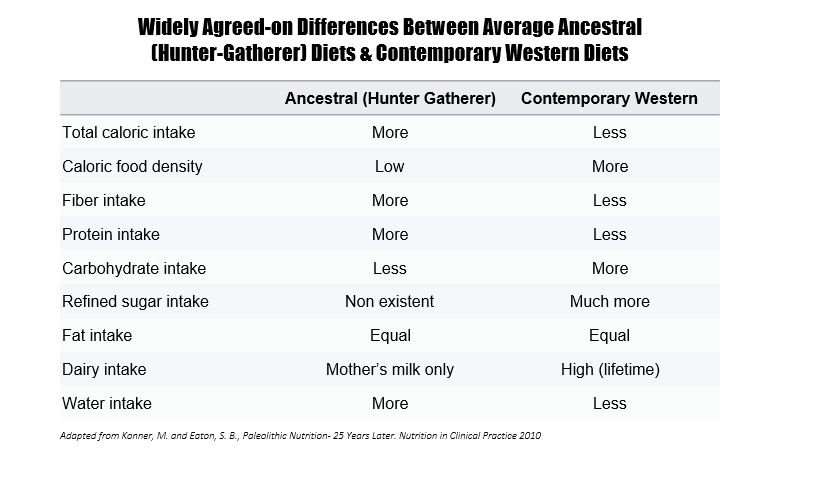
Today, over 65% of adult Americans are overweight [12] and worldwide obesity has tripled since 1975 with over 1.9 billion adults either overweight or obese.[1] Ironically, the data we have shows that our genetically identical hunter-gatherer ancestors consumed almost as many calories daily as the average American, but somehow, they possessed lean and well-muscled physiques that most would find enviable. As you can see from the above chart, our hunter-gatherer ancestors, ate a lot more than we do today, however, their diet consists mainly of low calorie and high fiber foods. One might surmise that differences in activity levels might be the causative factor why our hunter gatherer ancestors tend to have Olympic athlete type physiques with higher muscle mass and lower body fat than the average adult Westerner [14,15] who tends to have a bit of a belly.
Eating More To Lose Weight- Why More Exercise Isn’t The Answer
The average human several hundred thousand years ago, was as tall as the average citizen in an affluent society today but far more robust.[15] The hunter-gatherer lifestyle, (which lasted several million years), required some physical labor, but not nearly as much as the physical demands of the agriculture-based lifestyle that followed it some 10,000 years ago.[6] Humans today in developed countries are the only mammals in nature that do not have to work to obtain their food. While supermarket trips might be exhausting for many, we modern humans are far more sedentary than traditional foraging societies, BUT studies find that even though traditional foraging groups of humans are more active than we are, their total energy expenditures are almost identical to that of the average Westerner.[17] This might sound counterintuitive, but if we reflect a bit on the findings from the aforementioned Biggest Loser studies, it makes perfect sense.
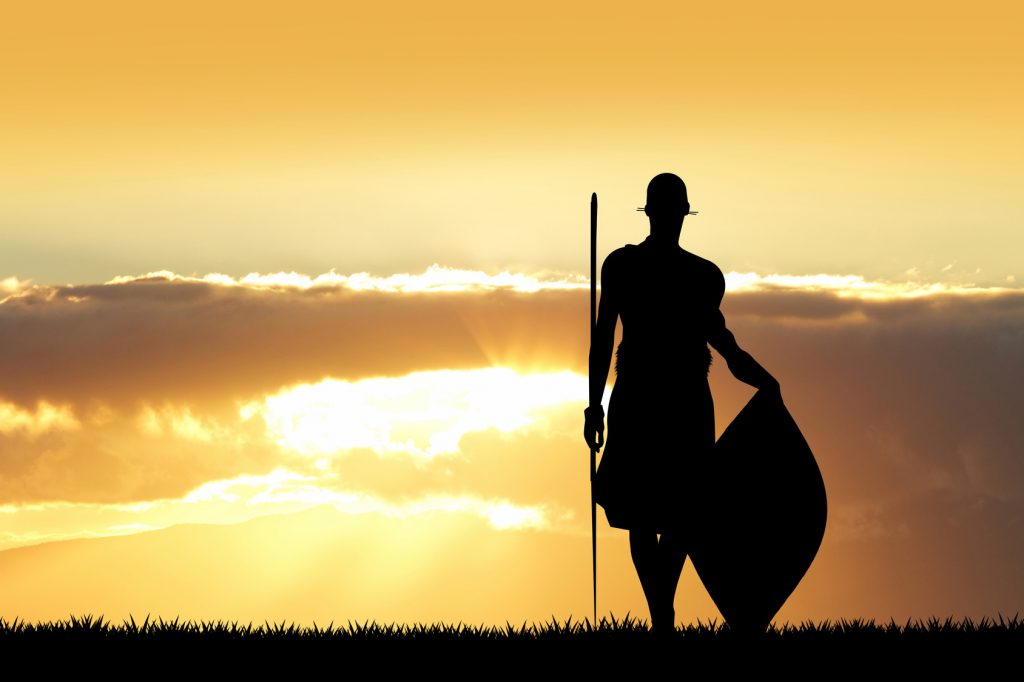
Hunter gatherers did not have the luxury of food delivery, and in times of scarcity they still had to find the energy to hunt and or gather food. Consequently, like the Biggest Loser contestants, subjected to prolonged low-calorie intakes in combination with high activity levels, the resting metabolic rates of modern hunter gatherers are far lower than that of their Westernized counterparts. As they are adapted to burn less calories and conserve as much energy as possible at all times. This is an important point in today’s world where counting the number of steps you take each day is considered a possible method of weight loss, because it certainly isn’t. Even more so when paired with a lower calorie diet. (A key factor to remember next time you eat something you shouldn’t and think you can just burn off the calories with some extra exercise.) The Hadza are a traditional hunter gatherer society whose energy expenditures and intakes have been meticulously observed and they provide us with a perfect example of why walking and running might not be the best bet for weight loss. Hadza members who walked long distances every day did not have a measurably higher total energy expenditure compared to tribe members who did not walk very much at all.[17] Were this not the case, humans would have been extinct after even one of the several climate changes that we have survived. [6] changes that are believed to have brought severe reductions in food supply in a world where energy expenditure was mostly a result of their searches for food. Overall, the pattern for foraging seems to involve days of intense physical exercise with men hunting one to four times a week on nonconsecutive days, and women gathering food every two to three days alternating with days of rest and lighter activity.[18] Other labor intensive activities included tool making, butchering, cooking, clothing preparation, carrying water, procuring firewood, dance based rituals and child care. Being more active will improve your health and decrease the likelihood of many forms of disease, this is unquestionable and universally supported by decades’ worth of research. [19,20,21,22,23,24,25] However, increased activity, especially in conjunction with a reduced energy intake won’t help you lose weight long term. Nor will it give you the trim, toned and lean body of a hunter gatherer. (See my eBook- The Role Of Exercise In Reducing Abdominal Fat for more on how our metabolisms slow down to compensate for excess energy used during exercise.) The million-dollar question remains, if total daily energy expenditure for hunter gatherers and modern-day humans in developed countries are the same, and daily energy intake is not that different, why do hunter gatherers have almost no zero incidences of obesity and excessive weight gain? One answer is that hunter gatherers don’t consume overly processed foods.
Eating More To Lose Weight: Paleo Isn’t The Answer
Men and women in foraging and small-scale agriculture societies that exist outside the ever-growing sphere of Westernized dietary influences have never had pizza, cheese, hamburgers, hot dogs, cake, ice-cream, soda, fruit juices, smoothies, protein shakes, cold cereal, hamburgers, fries, hot dogs, pasta, candy, chocolate, chips, cookies or pastries. Now before we rush to the incorrect conclusion, (but wildly profitable), that the solution is to follow a “Paleolithic diet” to lose weight and enjoy good health, keep in mind that unless you spend your entire life hunting and foraging, nothing you can buy in a regular supermarket comes close to what a “Paleolithic diet” could have looked like. And I say “could” because a true Paleolithic diet never existed. Even back in the Pleistocene era, different people in different parts of the world ate differently because they had different food sources. Like today, humans never consumed a single universal diet at any point in history, and trying to make one up is simply an exercise in magical thinking.
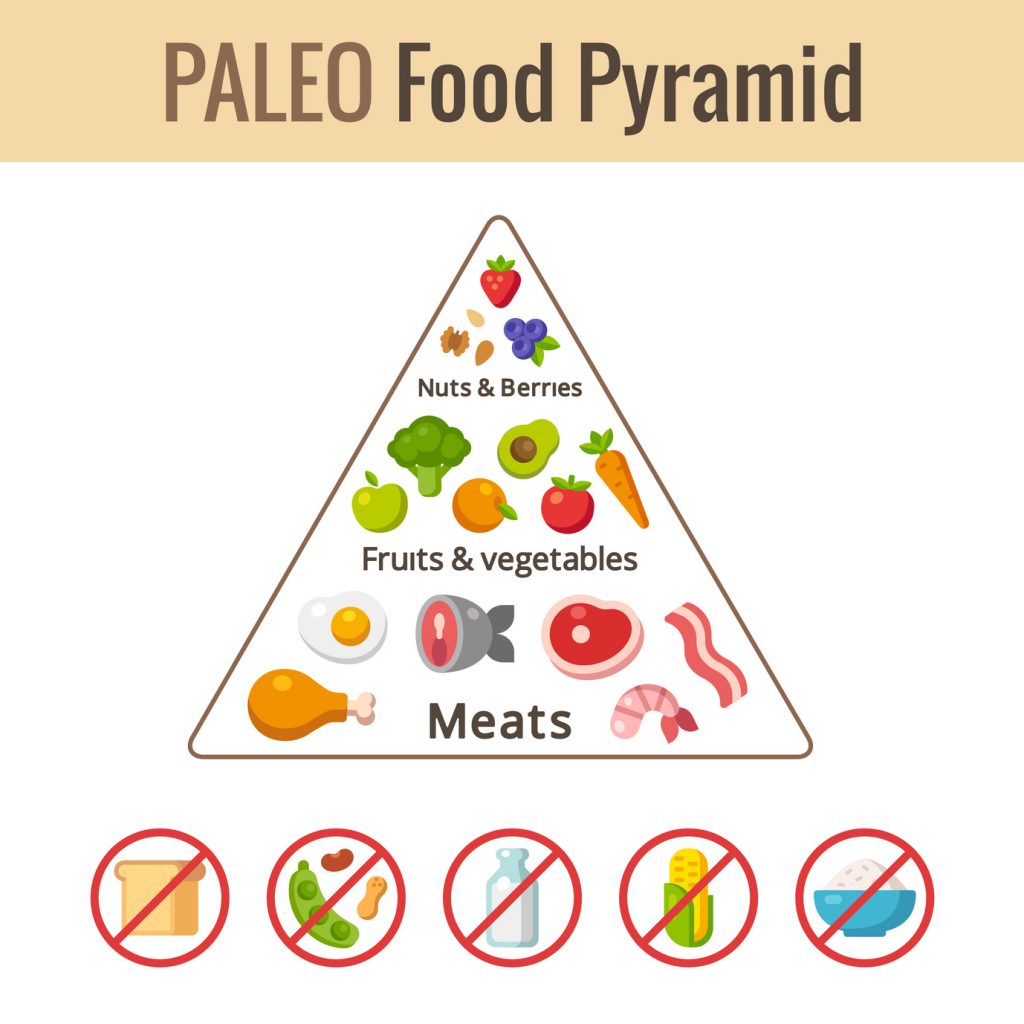
Furthermore, hunter gatherers (never ate and don’t eat) chicken, beef, pork or any domesticated animals products as they only have access to lean wild meat and or plant protein sources. Which makes their saturated fat intake far lower than ours, despite the fact that they tend to consume more fat than the average Westerner.[9,18,26] Our ancestors from the pre-Neolithic age also never had apples, bananas, oranges, pears, grapes, strawberries, cantaloupe or avocados. As almost none of the fruits and berries we commonly eat in the Western world exist in the wild. And the fruit that do exist in the wild are far cries from their uncultivated cousins. In the wild, fruits are higher in protein, higher in essential vitamins and minerals and are seldom sweeter than a carrot as the sugar in their pulp are mainly hexose. While modern fruits are genetically modified (expediently through technology or over time) to be higher in sucrose and lower in fiber. Making them sweeter and more appealing than their fibrous wild counterparts, which also tend to have far more seeds.[31] All of which slows digestion, absorption of sugars and the amount of fruit anyone can consume in one sitting. [9] What foods our ancestors during Paleolithic times ate, and what modern hunter gatherers also eat today are not only mostly unattainable for the average Westerner, but unsavory. They did and do eat wild meat, (which doesn’t just mean venison and bison), but rodents, insects, larvae, lizards, amphibians, worms, leaves, gums, roots, tubers, nuts, seeds, flowers, leaves, wild fruit and leaves.[9] Not items you can pick up at your local supermarket. If we disabuse ourselves of the fantasy of “Paleolithic diets” we can see that you don’t have to eat like a caveman for optimal health and weight management, but there is a lot that we can learn from them nonetheless that can help us eat more and still lose weight. There is ample data that shows conclusively that there are low to nonexistent incidences of obesity and or metabolic disease not just among hunter gatherers, but also among small-scale agriculturalists, who supplement their diets with hunting and foraging.[9] In fact throughout human history, population groups have found many ways to meet their nutritional requirements through the consumption of available plants and or animals.[33] And no one food, other than human breast milk during infancy, is either perfect or necessary for good health.[33] We can thrive and maintain healthy body weights if our daily diet consists wild animal foods, wild plant foods, or of a single cultivated starchy carbohydrate, such as rice, wheat, millet, barely or such grains, supplemented with wild plant and or animal protein.[34,35,36,37] Humans can even thrive on a diet of only wild plants and a diet made up exclusively of the raw fat and meat of marine animals.[30] Our ability to prosper health wise on such a variety of diets have but one common denominator. All of these diets have no processed and highly refined foods, are high in fiber, low in saturated fats and table sugar intake is nonexistent.
How To Eat More And Still Lose Weight: Step 1- Eat Calories, Don’t Drink Them
People living in any community where their diet consists entirely of natural form and or minimally processed foods do not have over eating as a health issue the way we do. Not because they don’t want to overeat, but because naturally occurring foods make it almost impossible to overeat, while enabling you to still consume a large quantity of food. There is a clear threshold to how much food your digestive system can hold at one point in time, and because it takes 62 to 40 hours for food to transit through your gut, there is a finite limit to how much you can eat on a daily basis. For millions of years, this limit kept us from eating more than we should, until the Industrial Revolution brought with a way to circumvent our natural barrier to overeating in the form of refined foods.
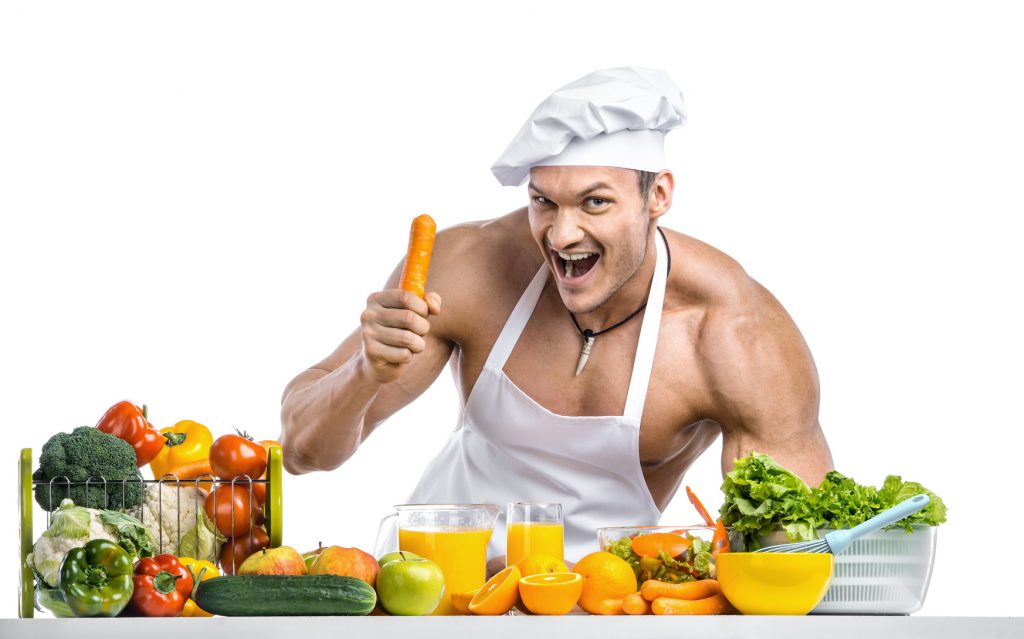
The first step towards eating more and still losing weight is to replace all liquid calories with solid ones. Which let’s you eat more!
Think about a glass of juice or a smoothie. It might be filled with naturally occurring fruits and vegetables, but no where in nature would you ever have juice or a smoothie blend. We are adapted to eat fruit and plant foods, which because of its inherent bulk and fiber, take time to consume. Juicing in any form circumvents our body’s natural barriers to consuming too much sugar or calories at any one time by speeding up dramatically the introduction of sugar into your bloodstream. Which then spikes insulin levels and sets of a cascade of hormonal and metabolic reactions that predispose your body increasing fat stores because at no time in our millions of years on earth would we have had access to so much sugar so quickly. Keep in mind that modern fruits are also have far more sugars than naturally occurring ones, to begin with, and so the pancreatic overload that brings about insulin resistance and diabetes becomes very possible when we use juices as a form of energy intake. However, by replacing juice calories from calories from whole fruit, you will be able to eat more to lose weight, and you will be far less likely to overeat due to the fiber content. It also helps to choose less sugary fruits whenever you can. See my article- Understanding How Glycemic Index and Glycemic Load Affects Weight Loss. Which leads to the second step towards eating more and still losing weight.
Eating More To Lose Weight: Step 2 Eat As Much High Fiber Foods As You Like
As we said before, there is only so much the human gut can hold at any point in time and it takes a while for our foods to transit. Fiber is the indigestible portion of plant cell walls and can significantly slow down gut transit times, fill you up and make you feel satisfied after eating.[39,40,41] Americans typically consume less than half of the recommended amounts of fiber each day, (approximately 15 grams a day), with grains, flours and potatoes being the most common sources in the U.S. diet.[38] Looking at what we may be adapted to, however is far higher as research shows that both ancestral and modern foragers consume up to 150 grams a day, which is 10 times more than today’s recommendations.[42] Recommendations that are not met by most Americans because the highest fiber foods like fruits, legumes and nuts are the sources consumed in the least quantities. [43] One could even summarize one of the main problems with Western foods as the removal of naturally occurring fiber, allowing us to go around naturally occurring caloric barriers. A potato, for example, takes a while to eat because of the fiber content, and not everyone can eat a whole baked potato. However, even a small child can easily consume the equivalent of two potatoes in the form of a package of potato chips. Which are essentially potatoes with all the fiber and fluid removed that makes it easier for you to overeat and easier for food manufacturers to charge you more for as well. The same applies to any kind of chips, (even kale chips), as well as other highly refined foods like cold cereals, rice cakes, corn chips, fruit strips, and the array of low fiber breads, pastries and wheat products that are common parts of Western diets.
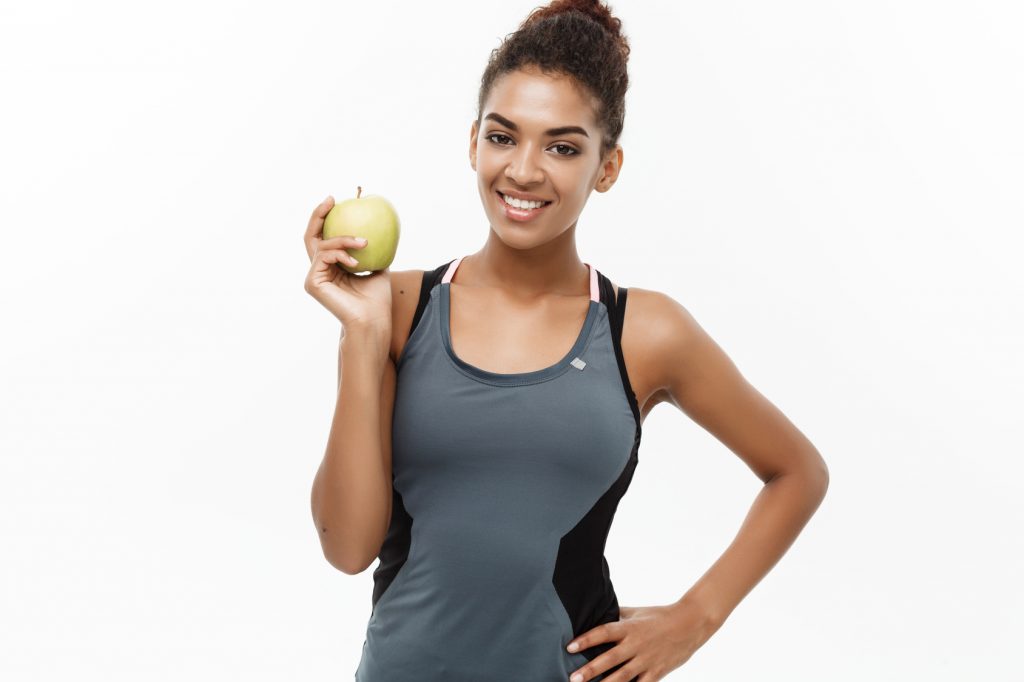
So always consume fruit, vegetable, grain or plant-based foods in as unrefined a form as possible. It will help you eat more while also reducing your caloric intake.
Eating More To Lose Weight: Step 2 Eat Only Grass Fed, Free Range Or Plant Based Proteins
Hunter-gatherer protein intake is estimated to be between a quarter to half of total energy intake, [44,45] a figure higher than modern protein recommendations, but line up with ratios used by athletes for decades. (See my article How Much Protein Do You Need To Build Muscle?) Modern dietary recommendations recommend limiting red meat intake, whereas meat was a staple protein source for hunter gatherers without our modern epidemic of cardiovascular disease and colon cancer. These recommendations exist for two reasons, one is that current data suggest that the excess body fat carried by an overweight or obese man or woman negatively affects their response to conventional dietary red and processed meat. Namely serum biomarkers that are associated with increasing obesity and inflammation. [46] So while it is true that hunter gatherers and many other populations regularly consume red meat without any health issues, they are usually also not overweight. Which affects the way your body responds. Thus, for overweight men and women, the recommendation would always be to avoid red meat. The other reason red meat, and domesticated animal protein in general like chicken might be problematic is that they are mostly consumed in the West in processed form, bacon, ham and cold cuts, and are also far higher in saturated fat than wild meats and free ranging livestock. The fat composition of the wild meat consumed by foragers and the free ranging livestock of subsistence farmers is very different from conventional grain fed domesticated animal protein sources. The fat content is far lower, and existing fats in wild game and animals that are free range are mostly polyunsaturated fats, not the saturated fats found in relatively sedentary and mostly grain fed farmed animals. [47]. As such, foragers and free range farming communities consume relatively little saturated fats compared to Westernized diets, even though their fat intake could often be relatively high.[48] See my articles Should You Be Eating Chicken and Should You Be Eating Meat). Seeds and nuts were and are also a part of the fat and protein intakes of many healthy non Western cultures and because the fat isn’t as concentrated in any of these sources, they can eat more and still maintain healthy physiques.
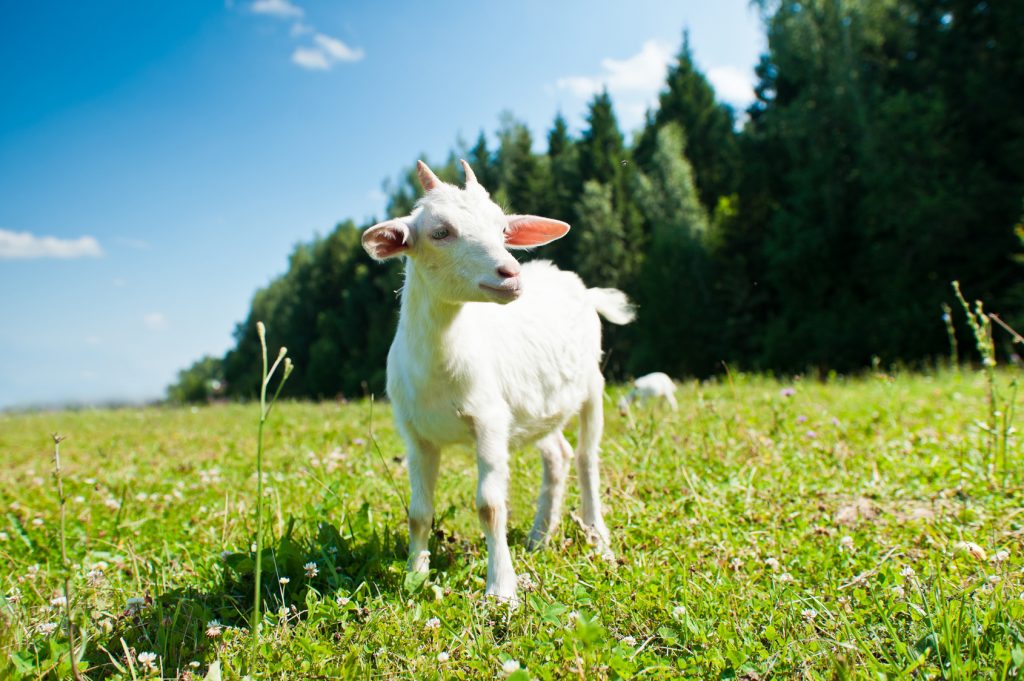
So, avoid non free range animal protein sources and consider also as much as possible having seeds and nuts in your diet. All of which will help you eat more quantity wise, but less calorie wise.
Eating More To Lose Weight: Step 3 Increase Resting Metabolic Rate By Increasing Muscle Mass
Avoiding highly refined foods and consuming a more natural based and high fiber diet will help you lose weight while eating more, but there is still the problem of metabolism. The other difference between ourselves and our foraging ancestors is that they have a higher levels of muscle mass and lower body fat percentages. We have already seen that being overweight can adversely affect how your body reacts to certain foods, and many suspect that the overwhelming incidences of food allergies and such are also results of us not having the bodies and environments that our progenitors had for generations. [6] Modern foragers, as we said, have Olympian physiques that are akin to that of smaller natural bodybuilders, even as they age. And the whole question of weight loss maintenance comes down to one central question, which is, how do you INCREASE resting metabolic rates (RMR) so that your body burns enough energy to stay lean while eating a considerable amount of food? It isn’t rocket science. But it isn’t very popular as we live in a world where the onus is on what is new and trendy, rather than what actually works and makes sense. In the 1970’s and 1980’s bodybuilding enjoyed a fair share of popularity, and with it came the examples of countless men and women who lifted weights, didn’t eat like proverbial birds, and yet were lean, fit and trim well into their advanced years. (See my article the Anti Aging Effects of Weight Training.) Aerobic exercise, high intensity interval training, boot camps, dance classes, body weight training and yoga may all have their benefits, but none of them affect metabolism long term and can’t because they do not provide the overload or intensity required for increasing muscle mass. (See my article How Muscles Get Bigger and Stronger From Weight Training.)

There are generally two reasons why metabolic rate slows down over time. For most people (who don’t engage in a program of intensive resistance exercise), as they get older, their resting metabolic rate will slow down. Consequently, their bodies will need less and less calories daily to maintain equilibrium. This is why many people report being able to eat a certain way in their younger years, but at a certain point, they started gaining weight without any changes to their eating habits. This metabolic slowdown is not inevitable, it is the aftermath of sarcopenia, which is the loss of muscle mass over time.[49] Fat free tissue (muscle mass) is the most energy demanding form of tissue in your body, and the good news is that a program of high intensity resistance training can not only restore muscle mass lost over time as you get older, but bring them to levels higher than they were when you were younger. (See my article The Anti Aging Effects of Weight Training). By increasing your muscle mass, you will not only be healthier, stronger and more metabolically fit, but you will also be able to eat more and still lose weight compared to someone the same size with less muscle mass.
Eating More To Lose Weight- More Food Does Not Always Equate To Weight Gain
Using myself as an example, in my mid-forties and weigh in anywhere between 208lbs to 205lbs and at six feet tall, I am almost 40lbs heavier than the average non overweight male. My body fat percentage is in the single digits and I am in separated and defined to ripped condition at year-round. My activity levels could not be considered high, as my weekly exercise consists of three high intensity workouts that can last anywhere from 15-20 minutes when I train on my own. Besides this, I might take my bike three blocks down to get groceries once a week, if I feel up to it, I might even ride a bit further to get some supplies once and a while, but that would be the exception rather than the rule. So, a time commitment of no more than an hour a week of high intensity training with weights is all that would be needed for anyone to increase their muscle mass over time to levels where they could eat more and still lose weight. Ordinarily the law of small numbers would exclude my personal experience as having any merit as a general recommendation, but it’s the same formula that I have used successfully over the past twenty-seven years with hundreds of men and women of varying ages. All of them, over time, develop a baseline of muscle mass that allows them to, one might say, get away with an indulgence here and there and still not increase their body weight to a point where they are overweight. High intensity weight training increases resting metabolic rate due to the resulting increase in skeletal muscle mass, and requires extra energy to repair the muscle tissue that is damaged during the workout. [50] Metabolic rate also increases after the workout as significant energy is needed to restore equilibrium when training at high intensities, a phenomenon called excess post exercise oxygen consumption, (EPOCH). [51,52] As a result, I can consume 3,300 to 3,500 calories daily and effortlessly maintain my body weight at a low body fat percentage. Ironically, that intake is very close to what many studies found for male hunter gatherers, and my activity level isn’t that far off either, as they do not, always expend large amounts of energy every day. So the key to being able to consume almost as much as calories as the average American with an unhealthy diet, is having a high percentage of muscle mass, and performing exercise designed to build more muscle. My Fat Free Mass Index places me at 26, which is just as much muscle as a human being can build without the aid of anabolic steroids, and because the muscle mass I carry was built over the course of decades without drugs, even if I stopped training completely, I would never lose much of it. And because my diet is not filled with processed foods, I get to eat quite a lot and can still lose weight at the same time.
Overeating is almost never a problem as I eat anywhere from 5 to sometimes 6 meals a day to stay in positive energy balance and while mine is the end product of thirty years of hard training, anyone, regardless of age can increase their muscle mass, and this is not something we should be afraid of. Women especially fear developing man sized muscles, but this is all but impossible without the use of anabolic steroids. A look that unfortunately has become synonymous with increase muscle mass thanks to non-drug tested bodybuilding and physique contests, social media and Hollywood actors who gain inhuman amounts of muscle while claiming to be drug free. The truth is that even the most genetically gifted have to work very hard to put on muscle mass, and there is only so big you can get. The lean and toned bodies of men and women living in primitive conditions are more of a realistic example of what you can look like. As they don’t use drugs and have no profit to be gained by using it and denying it the way most male and female fitness personalities do in this part of the world. (See my article Should Women Lift Weights.) If I had to eat a spartan low calorie diet, I don’t believe I would be able to maintain the look I have. Overeating is indeed a problem for many people today and it would be irresponsible to brand recommendations to eat less as being without merit. Nutritional guidelines are not written for advanced athletes but rather for the sedentary majority consuming mostly processed foods and eating less processed foods are always a good idea. However, given the fact that we have a genetic predisposition towards eating more as a lasting artifact of our earlier days of existence, attempts to circumvent this inherent tendency will always be doomed to failure. Instead, the focus should always be on avoiding processed and refined foods, eating as natural as possible and increasing muscle mass through high intensity training protocols so you can eat more, lose weight and most importantly, keep it off.
High Intensity Bodyweight Training: Ballistic Pushups & Dips!
This was a tough one!
Starts out with ballistic push ups (like clap pushups but without the clap as my wrist is still not 100%) nonstop for 20 reps, then all out on dips for 10 reps.
To say it was painful would be an understatement, but you just have to push through and keep on going.
Still training, hope you are too and as always, Excelsior!!! #naturallyintense
#hometraining #homeworkout #homeworkout #highintensitytraining #naturalbodybuilder #naturalbodybuilding #fitover40 #naturalbodybuildingvideos #chestday #chesttraining #naturalbodybuildingtips #pushups #dips #bodyweighttraining #highintensitytrainingtips #drugfreebodybuilding #calesthenics
Kevin's Unconventional Biceps Training- 3-6 Minutes a Week!
In this video I go over my biceps training using the Naturally Intense High Intensity Training protocols that helped me go from having arms measuring 11.5 to 12 inches to 18 inches drug free!
It's an unconventional approach for certain, but it's one that's helped my arms grow and the hundreds of men and women I have trained over the past 30 plus years.
Now, my success isn't due to being genetically gifted, as it took me the better part of 11 years to get my arms up to those measurements.
Which is significant as it works and been been proven time and time again to work for the average man or woman trying to grow their arms without drugs.
It's my hope that these high intensity training protocols can help you as much as they helped me!
Click on my bio link to see the full video on my YouTube channel and thanks as always for taking the time to look at my work!!! Excelsior!!! #naturallyintense
#highintensitytraining #naturalbodybuilder #naturalbodybuilding #fitover40 #naturalbodybuildingvideos #armworkout #bicepsworkout #naturalbodybuildingtips #biceps #armtraining #highintensitytrainingtips #drugfreebodybuilding #barbellcurls
At the Lancaster Classic Day 2 Elimination Rounds Against European Champion, and World Record Holder Leo Pettersen @leo_barebow_archer
I don't talk much about it but I'm also a competitive barebow archer (surprise!) and last Saturday I had the honor of making it to Day 2 at the Lancaster Archery Classic in the Barebow Division, as I made the top 64 out of 267 competitors and had a chance to shoot with some of the greatest barebow shooters on the planet!
I didn't make it past Leo, but it was a real rush to be there and a huge thanks to my coach, Joe MyGlyn @prolinearchery for helping me get there.
Thanks as well to my good friend @sean_chan33 for all of his help from the very start, to my line buddy Aaron Shea for taking the shot and showing up to support!
My thanks as well to rob_kaufhold for putting on and promoting one of the best archery tournaments on earth!
Thanks also to to everyone who took the time to send a supporting word and I am looking forward to next year!!! #naturallyintense #barebow
#lancasterclassic #lancasterarcheryclassic2024 #lancasterarchery #archery #fitover40 #barebowrecurve #targetarchery
Dumbo, Brooklyn circa 2004
This shot was taken as part of the promotion for my Naturally Intense DVD and was about a year after my last bodybuilding competition.
It was a grueling photoshoot.
We started at about 10 am and finished around 4pm and I was completely spent, but the more we shot the sharper I looked, so we kept on going.
It's nice to look back from time to time and as tired as I was, we all had a blast!
My thanks to @stephanie_corne_artwork, @https://pulse.ly/itgnag2dec and @ftaz1 for taking the shots!!!
Thanks for watching and as always, Excelsior!!! #naturallyintense
#naturalbodybuilder #naturalbodybuilding #throwback #fifthavenuegym #5thavenuegym #drugfreebodybuilding #naturalbodybuildinglifestyle #gymlife #gymmotivation #naturalbodybuildingmotivation #bodybuilding #blackandwhite #instablackandwhite #bnw
Can You Build An Impressive Physique Training Only At Home?
Absolutely!
I stopped training in commercial gyms as of March 2020 and have been training at home ever since.
Initially I was admittedly worried that I might lose some of my gains or not make as much progress, but that certainly wasn't the case.
I've consistently continued to improve with my high intensity workouts and muscles have no idea where they are training.
As long as the criteria of adequate intensity and overload are met, there will be an adaptive response and your muscles will get bigger and stronger.
So don't worry at all about where you train, focus instead of what will be the best way for you to always be training!
Thanks for watching and as always, Excelsior!!! #naturallyintense
Kevin's Three Day Training Spilt!
For the past 33 years I have trained three times a week with Naturally Intense High Intensity Training workouts lasting 10, 15 to 20 minutes max.
It's a training split tried and testes not only in it's helping me realize my goal of becoming a successful natural bodybuilder, but it's also helped hundreds of men and women over the past three decades.
I have tested just about every possible training split imaginable and for this particular style of high intensity training, this particular grouping consistently yields fantastic results.
I hope it helps you as much as it's helped me over the years and thanks so much for taking the time to look at my work.
Keep training hard and Excelsior!!! #naturallyintense
Excelsior!!! #naturallyintense
#trainingsplit #3daytrainingsplit #threedaytrainingsplit #naturalbodybuilding #naturalbodybuilder #naturalbodybuildingvideo #naturalbodybuildingmotivation #naturalbodybuildingtips #drugfreebodybuilding #bodybuilding #highintensitytraining #highintensitytrainingtips
405 Stiff Leg Deadlift for 7 Reps! High Intensity Training.
First leg workout of the year and already pushing it!
I haven't done a stiff leg deadlift over 315lbs for about 3 years at this point, and I did my last set with 315lbs and comfortably got to 10 reps and decided I had far too much gas left in the tank and that I should go up in weight.
So I did.
I figured I might get a solid 6 reps in, but I made it to 7 and I think I could have gone on to get a full 10 reps BUT that's when good judgement prevailed.
As a bodybuilder having not trained this heavy for so many years, the shock of this much weight would be more than enough to stimulate muscle growth, and doing more reps wouldn't yield any greater returns, only increase the likelihood of injury.
It's not about the numbers, it's about training to a point where you achieve your goal, and it's important to have a goal in mind as a bodybuilder based on increasing muscle mass rather than hitting a particular number.
Besides, if in my 20's I never did more than 405lbs on a stiff leg deadlift, it doesn't make any sense going heavier than when I am almost 50!
Could I deadlift more at this point?
Absolutely but just because you can doesn't mean you should!
So keep those weights in a good working range, keep it safe and as always Excelsior!!! #naturallyintense
#hometraining #homeworkout #homeworkout #roguerack #highintensitytraining #naturalbodybuilder #naturalbodybuilding #fitover40 #naturalbodybuildingvideos #backworkout #naturalbodybuildingtips #backtraining #highintensitytrainingtips #drugfreebodybuilding #fitoverforty #deadlift
Turning 50 in a few months...
Not much of a big deal for me as I still feel pretty much the same but I hope that my example helps show what can be done with a lifetime commitment to eating well and training consistently!
Thanks for coming along on the journey and as always, Excelsior!!! #naturallyintense
#naturalbodybuilder #naturalbodybuilding #healthylifestyle #fitover40 #drugfreebodybuilding #naturalbodybuildingmotivation #natty #fitness
Please note that all material is copyrighted and DMCA Protected and can be reprinted only with the expressed authorization of the author.
CLICK FOR A FREE COPY OF KEVIN’S WEIGHT LOSS EBOOK!
Featured everywhere from the Wall Street Journal to CBS News, Kevin Richardson’s Naturally Intense High Intensity Training have helped hundreds lose weight and transform their bodies with his 10 Minute Workouts. One of the top natural bodybuilders of his time, Kevin is also the international fitness consultant for UNICEF and one of the top personal trainers in New York City.
References for eating more to lose weight:
1. World Health Organization 2017 Fact Sheet
2. Stunkard AJ, McLaren-Hume M. The results of treatment for obesity. Arch Int Med 1959
3. Kassirer J, Angell M. Losing weight—an ill-fated New Year’s resolution. N Engl J Med 1998
4. Wing RR, Hill JO. Successful weight loss maintenance. Annu Rev Nutr 2001
5. Eaton SB, Konner MJ. Paleolithic nutrition. A consideration of its nature and current implications. N Engl J Med 1988
6. Lieberman D. The Story of the Human Body: Evolution, Health, and Disease. Ranndom House 2000
7. Origins and evolution of the Western diet: health implications for the 21st century. Cordain L, Eaton SB, Sebastian A, Mann N, Lindeberg S, Watkins BA, O’Keefe JH, Brand-Miller J. Am J Clin Nutr 2005
8. Murphy M, Robertson W, Oyebode O. Obesity in International Migrant Populations [published correction appears in Curr Obes Rep. 2017 Aug 31;:]. Curr Obes Rep. 2017
9. Milton K. Back to Basics: Why Foods of Wild Primates Have Relevance for Modern Human Health. Nutrition 2000
10. Weigle DS. Appetite and the regulation of body composition. FASEB J 1994
11. R.L. Leibel, M. Rosenbaum, J Hirsch. Changes in energy expenditure resulting from altered body weight. The New England Journal of Medicine 1995
12. Hedley AA, Ogden CL, Johnson CL, Carroll MD, Curtin LR, Flegal KN. Prevalence of overweight and obesity among US children, adolescents, and adults, 1999–2002. JAMA 2004
13. Konner, M. and Eaton, S. B., Paleolithic Nutrition- 25 Years Later. Nutrition in Clinical Practice 2010
14. Ruff CB, Trikhaus E, Walker A, Larsen CS. Post cranial robusticity in Homo. 1. Temporal trends and mechanical interpretation, Am. J. Physical Anthropol. 1993
15. Bridges PS. Skeletal biology and behavior in ancient humans. Evol. Anthropol. 1996
16. Marlowe, F. W. “Hunter-gatherers and human evolution”. Evolutionary Anthropology: Issues, News, and Reviews. 2005
17. Pontzer H, Raichlen DA, Wood BM, Emery Thompson M, Racette SB, Mabulla A, Marlowe FW.Energy expenditure and activity among Hadza hunter-gatherers. Am J Hum Biol. 2015
18. Cordain L, Gotshall RW, Eaton SB. Physical activity, energy expenditure and fitness: an evolutionary perspective. Int J Sports Med 1998
19. Warburton DE, Nicol CW, Bredin SS. Health benefits of physical activity: the evidence. CMAJ. 2006
20. Blair SN, Brodney S. Effects of physical inactivity and obesity on morbidity and mortality: current evidence and research issues. Med Sci Sports Exerc 1999
21. Blair SN, Kohl HW, Paffenbarger RS Jr, et al. Physical fitness and all-cause mortality. A prospective study of healthy men and women. JAMA 1989
22. Paffenbarger RS Jr, Hyde RT, Hsieh CC, et al. Physical activity, other life-style patterns, cardiovascular disease and longevity. Acta Med Scand Suppl 1986
23. Warburton DE, Gledhill N, Quinney A. Musculoskeletal fitness and health. Can J Appl Physiol 2001
24. Warburton DE, Gledhill N, Quinney A. The effects of changes in musculoskeletal fitness on health. Can J Appl Physiol 2001;26:161-216.
25. U.S. Department of Health and Human Services. Healthy people 2000
26. Cordain L, Miller JB, Eaton SB, Mann N, Holt SHA, Speth JD. Plant-animal subsistence ratios and macronutrient energy estimations in worldwide hunter-gatherer diets. Am J Clin Nutr 2000
27.Bingham A. Patterns of dietary fiber consumption in humans. In: Spiller UA, CRC handbook of dietary fiber in human nutrition, 2nd ed. Boca Raton: CRC Press, 1993.
28. Truswell AS. Diet and nutrition of hunter-gatherers. In: Health and disease in tribal societies. Ciba Foundation Symposium 49. New York Elsevier Science, 1977.
29. Neel N. Health and disease in unacculturated Amerindian populations. In: Health and disease in tribal societies. Ciba Foundation Symposium 49. New York: Elsevier Science, 1977
30. Ho Kj, Mikkelson B, Lewis LA et al. Alaskan arctic eskimo: response to a customary high fat diet. Am J Clin Nutr 1972
31.Baker BH, Baker I. Sugar composition of nectars and fruits consumed by birds and bats in the tropics and subtropics. Biotropica 1998
32. Diamond JM. Guns, Germs, and Steel: The Fates of Human Societies W. W. Norton & Company; 1st edition 1999
33. Nestle M. Waht To Eat. North Point Press 2007
34. Truswell AS. Diet and nutrition of hunter-gatherers.In: Health and disease in tribal societies. Ciba Fowulatwn Symposium 49. New York Elsevier Science, 1977
35. Neel N. Health and disease in unacculturated Amerindian populations. In: Health and disease in tribal societies. Ciba Foundation Symposium 49. New York: Elsevier Science, 1977
36. Salzano FM, Callegari-Jaques SM. South American indians: a case study in evolution. Oxford: Clarendon Press, 1988
37. Wrick KL, Robert.son JB, Van Soest PJ, et al. The influence of dietary fiber source on human intestinal transit and stool output J Nutr 1983
broccoli, kale, tomatoes, almond milk,
38. Food and Nutrition Board, Institute of Medicine. Dietary Reference Intakes for Energy, Carbohydrate, Fiber, Fat, Fatty Acids, Cholesterol, Protein, and Amino Acids. Washington, DC: National Academy Press, 2005.
39. Blundell JE, Lawton CL, Cotton JR, et al. Control of human appetite: implications for the intake of dietary fat. Annu Rev Nutr. 1996
40. Maqbool S, Parkman HP, Friedenberg FK. Wireless capsule motility: comparison of the SmartPill GI monitoring system with scintigraphy for measuring whole gut transit. Dig Dis Sci 2009
41. Juvonen KR, Purhonen AK, Salmenkallio-Marttila M et al. Viscosity of oat bran-enriched beverages influences gastrointestinal hormonal responses in healthy humans. J Nutr 2009
42. Kliks M. Paleodietetics: A Review of the Role of Dietary Fiber in Preagricultural Human Diets. In: Spiller G.A. (eds) Topics in Dietary Fiber Research. Springer, Boston, MA 1978
43.US Department of Agriculture, Center for Nutrition Policy and Promotion. Trends in Dietary Fiber in the US Food Supply: Sales of Grain Products. Alexandria, VA: US Department of Agriculture Center for Nutrition Policy and Promotion, 2007.
44. Cordain L, Watkins BA, Florant GL, Kehler M, Rogers L, Li Y. Fatty acid analysis of wild ruminant tissues: evolutionary implications for reducing diet-related chronic disease.
Eur J Clin Nutr 2002
45. Origins and evolution of the Western diet: health implications for the 21st century. Cordain L, Eaton SB, Sebastian A, Mann N, Lindeberg S, Watkins BA, O’Keefe JH, Brand-Miller J. Am J Clin Nutr 2005
46. Chai W, Morimoto Y, Cooney RV, et al. Dietary Red and Processed Meat Intake and Markers of Adiposity and Inflammation: The Multiethnic Cohort Study. J Am Coll Nutr. 2017
47. Eaton SB. Humans, lipids, and evolution. Lipids 1992
48. Kious B, Geffen D. Hunter-gatherer Nutrition and Its Implications for Modern Societies. Nutrition Noteworthy 2002
49. Yarasheski, Kevin E. “Aging, and Muscle Protein Metabolism”. J Gerontol A Biol Sci Med Sci 2003
50. Tremblay, A. et al. Impact of exercise intensity on body fatness and skeletal muscle metabolism. Canada Metabolism. 1994
51. Bahr R “Excess postexercise oxygen consumption–magnitude, mechanisms and practical implications”. Acta Physiologica Scandinavica. Supplementum 1998
52. Bielinski R, Schutz Y, Jéquier E . “Energy metabolism during the postexercise recovery in man”. The American Journal of Clinical Nutrition 1985
